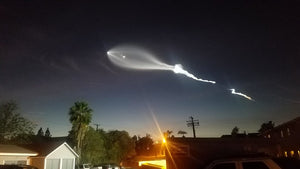SuperMoon, Lyrids Meteor Shower and Comet Atlas
The moon will be the main feature in the night sky during the first week of April as it will be the best supermoon of 2020. The supermoon will be at it's biggest and brightest on April 7th.
The Lyrid meteor shower is a trail of dust left by the comet Thatcher which orbits the sun once every 415 years. The dust left behind the path of this comet are what give us the Lyrids. A meteor shower that is known to produce up to 30 meteors per hour at peak. The radiant in the constellation Lyra is located just NE of the bright star Vega.The peak of this meteor shower will be the evening of April 21st which coinsides with a new moon so there will be little moonlight to compete with the meteors.
For viewing, Dress warmly. Bring a reclining chair, or spread a thick blanket over a flat spot of ground. Lie down and look up somewhat toward the east. Meteors can appear in any part of the sky, although their trails will tend to point back toward the radiant Vega.
If you would like to take a time-lapse video we would recommend using our best seller, the Revolution Imager in combination with an All Sky wide angle lens.
Finally Comet Atlas, a newly discovered comet will soon make a splash in the night sky as it grows brighter throughout April, potentially becoming bright enough to see with the naked eye by the end of the month. In the Northern Hemisphere we can follow the comet from Ursa Major through Camelopardalis near the big and little dippers. For now, we recommend using a 6 inch scope to see this.
We are offering unbeatable deals during this time of global concern and we would love to help you start a new hobby or upgrade your current setup. Check out our Awesome Deals this month on CGEM II and Evo-stars or
Call Us! 1-888-471-9991
Clear Skies,
-OC Telescope







